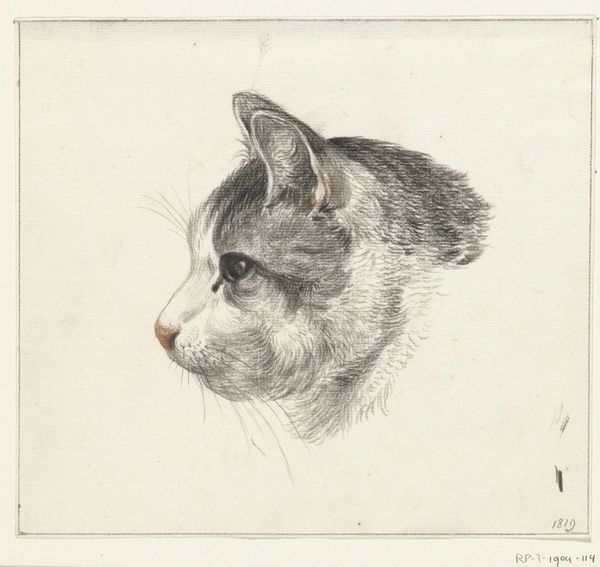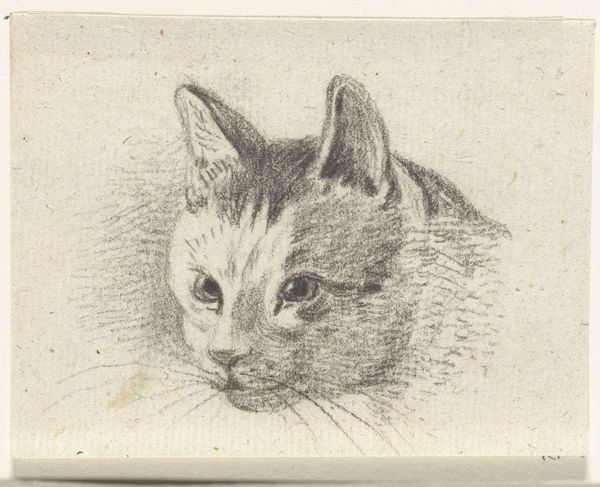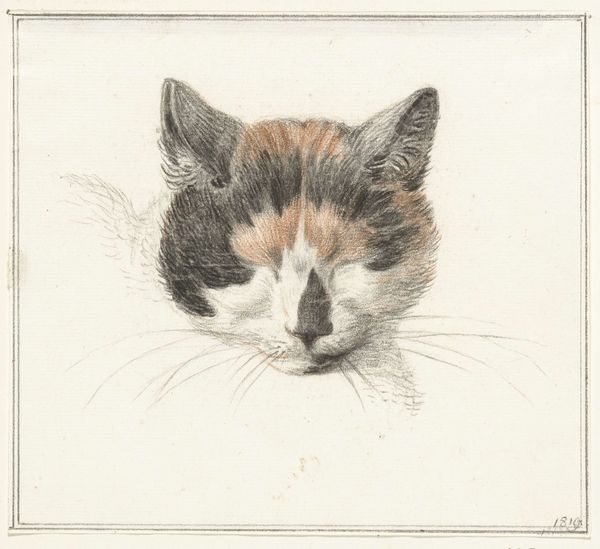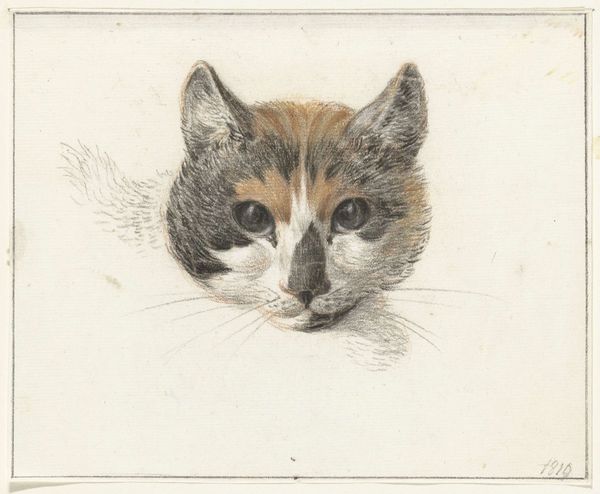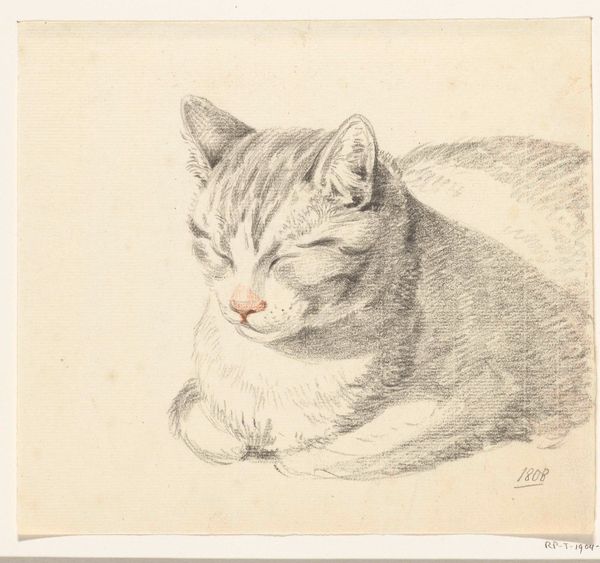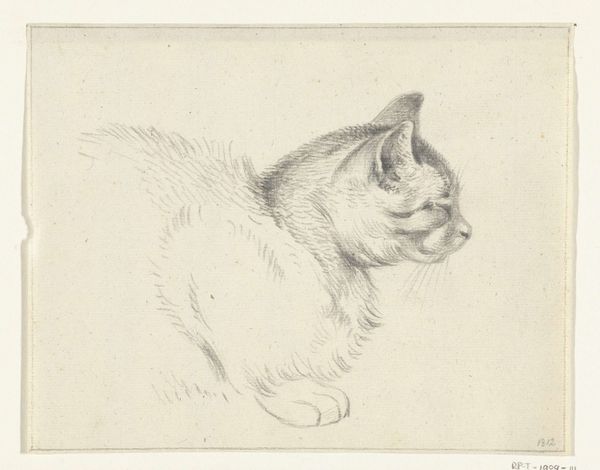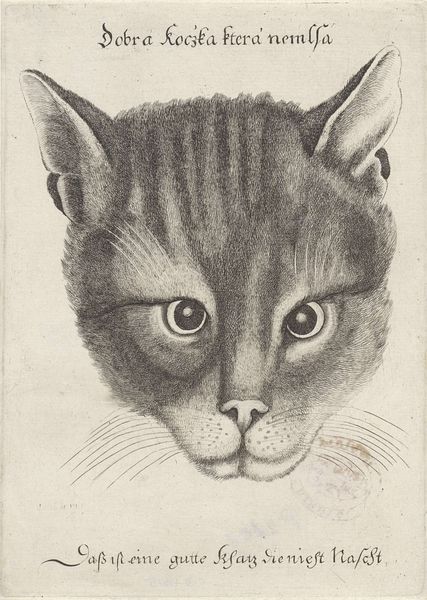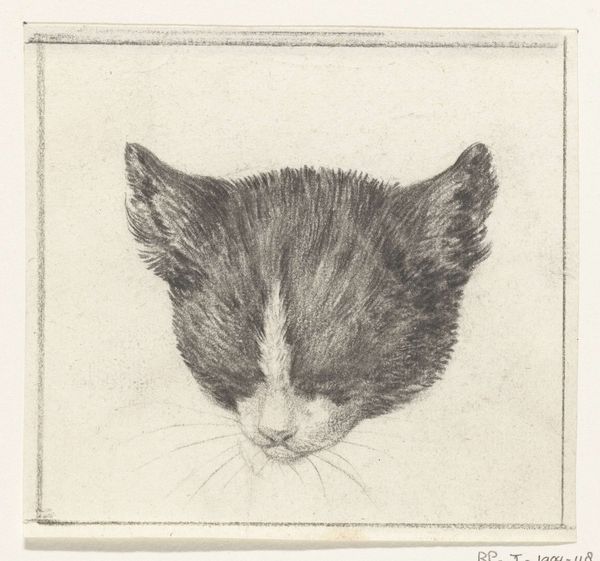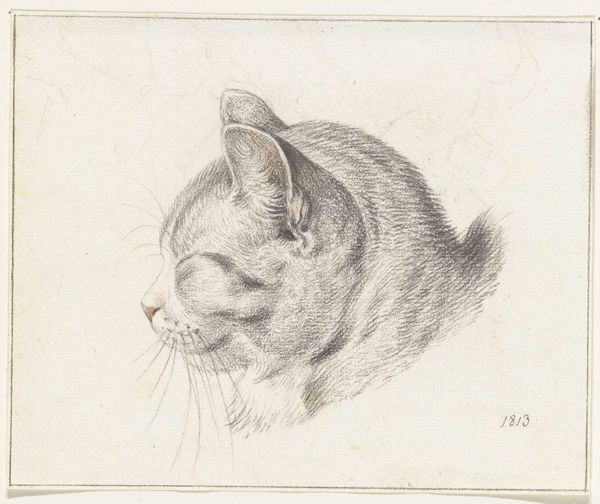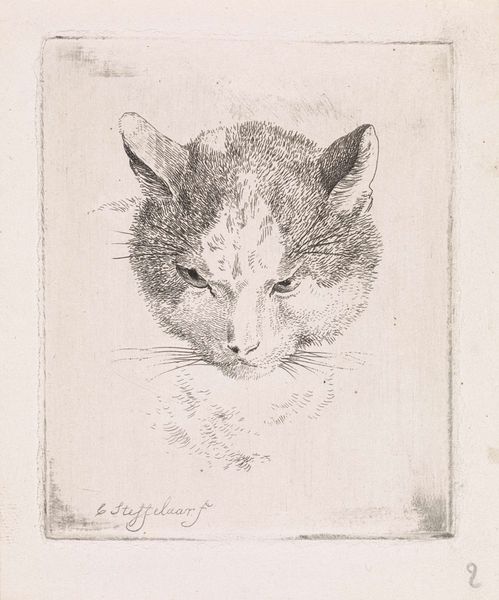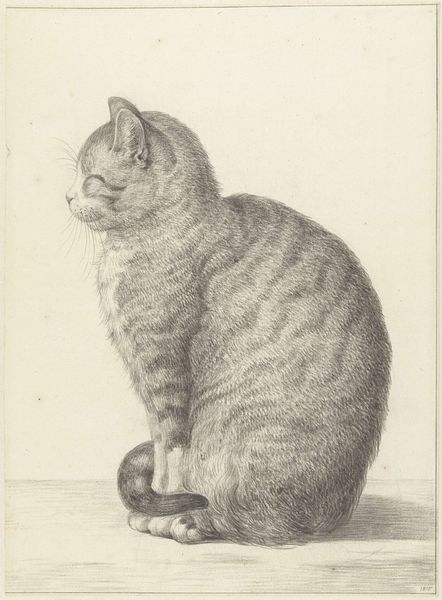
drawing, pencil
#
portrait
#
pencil drawn
#
drawing
#
pencil sketch
#
pencil drawing
#
pencil
#
animal portrait
#
realism
Dimensions: height 122 mm, width 114 mm
Copyright: Rijks Museum: Open Domain
Curator: I’m immediately drawn to the delicacy of this pencil sketch. It’s a portrait, close up, of a cat’s head, almost symmetrical and very endearing. Editor: We’re looking at "Head of a Cat, Seen from the Front by Candlelight," made around 1812 by Jean Bernard, currently held here at the Rijksmuseum. It's rendered in pencil, as you noted. Thinking about the context, drawings like these offer a glimpse into the more intimate and informal artistic practices of the time, separate from large commissions. Curator: It is indeed charming. Look at the subtle variations in shading achieved with simple pencil strokes. The texture he coaxes from the medium makes the cat look almost touchable, yet there is no extravagance involved in its creation. Just a mastery of the instrument and its possibilities. Editor: Precisely, and I find it compelling to think about this piece in relation to notions of accessibility and artistic training during the early 19th century. Pencil drawings, in their relative affordability and ease of production, became popular among a growing middle class interested in artistic pursuits. What was the market like for these portraits, and who was commissioning this kind of work? It wasn’t academic, necessarily. Curator: That’s an interesting question. And perhaps one could ponder this piece through the lens of realism – an attempt to represent a domestic animal truthfully. But truth in art-making involves skill, the pencil and paper, and this artist’s individual perspective. These components contribute to our understanding of this particular work as an intersection of available media and technique. Editor: True, it makes me consider the evolving status of animals within bourgeois society and their depiction. Images of domestic animals become ever more ubiquitous as a symbol of a household's status. Curator: I find I return to the craftsmanship. To execute such detail with just a pencil requires profound control and patience. Editor: I'm left pondering this portrait as an interesting document in social attitudes toward animals during this period, but the real mystery involves figuring out the story that led to its creation. Curator: For me, its simple, material expression still conveys an affection that speaks directly across the ages.
Comments
No comments
Be the first to comment and join the conversation on the ultimate creative platform.

